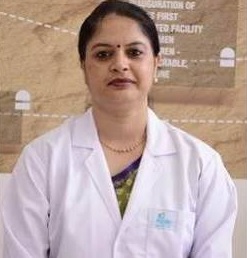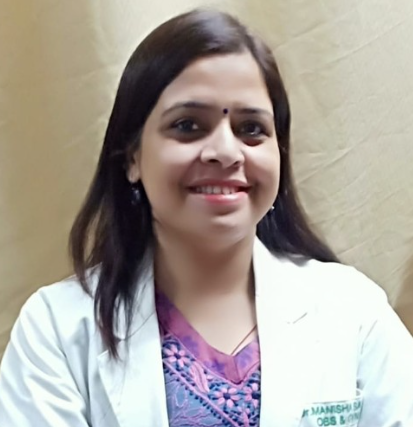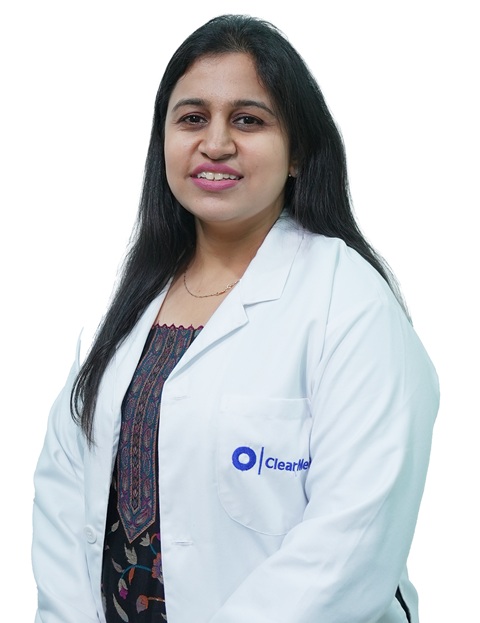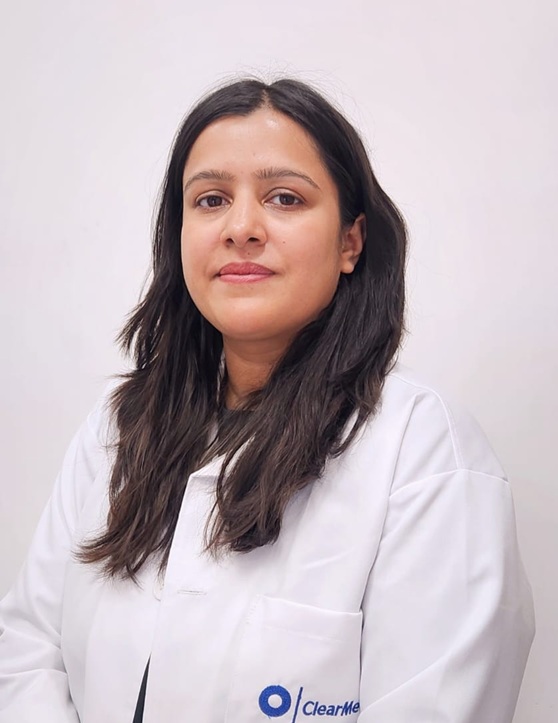Types of Abortion - Medical, Surgical and Induction Abortion

Quick Summary
- Abortion is a safe and legal medical procedure that can be performed in India. There are many different types of abortion techniques available, and the best option for you will depend on your individual circumstances.
- It is important to choose a reputable doctor or clinic that follows the correct procedures. It is also essential that you undergo the safest type of abortion according to your gestational age.
Many women find themselves burdened with a pregnancy that they don't want. There can be various reasons, like an unhealthy mother, pregnancy out of wedlock, etc. (discussed in detail later in the article). Unlike in other countries, it is not difficult for women in India to get rid of unwanted pregnancies.
It's a good idea to become informed about the types of abortion techniques if you're thinking about getting one so you can choose which is the best and easiest for you.
While numerous centres offer the service, it is wise to opt for good doctors and clinics that follow the correct procedures. It is also essential that one must undergo the safest type of abortion according to gestational age.
The Female Reproductive System
The female reproductive system consists of parts that are visible outside and concealed inside the body. The main parts of the reproductive system are:
- Ovaries - There are two ovaries on either side of the uterus. They release eggs and produce hormones that regulate the menstrual cycle and facilitate pregnancy, childbirth and the production of breast milk.
- Fallopian Tubes - This pair of tubes facilitate the movement of the eggs from the ovaries to the uterus.
- Uterus - It is the pear-shaped organ that allows a foetus to grow.
- Cervix - It is a tube-like structure at the bottom of the uterus. The cervix opens into the vagina.
- Vagina - It is a flexible tubular structure that connects the internal and external reproductive organs. It is through the vagina that menstrual blood and discharge are expelled from the body.


What Is Abortion?
Abortion refers to the procedure performed to terminate the pregnancy as per the wish and consent of the mother. Qualified doctors must perform an abortion to ensure success and safety. It is legal to terminate pregnancy in India up to 24 weeks under the MTP Act 1971. The opinion of a registered medical practitioner is necessary for the medical termination of pregnancy till 20 weeks of pregnancy, while there must be two registered medical practitioners after 20 weeks.
Reasons For Getting An Abortion
Termination of pregnancy can be due to medical conditions. There are times when women find themselves pregnant but don't want to deliver the baby. Abortion for any condition is legal in India. Some of the reasons for abortion are:
- Poor health condition of the mother
- The foetus has a medical condition that prevents it from developing fully
- Not being financially prepared to bring up a baby
- Issues related to husband or partner
- Concerns about pregnancy interfering with the career
- Not being mature enough to nurture a child
- The desire to give better care and attention to existing children
- Marital status
Types Of Abortions
Women can terminate their pregnancy by taking oral medicines or undergoing surgery. The method of abortion differs depending on the pregnancy stages. It is the joint decision of the patient and the doctor to adopt the most suitable and safe way. Various factors like the age of the foetus, the mother's health condition and her comfort are considered before finalising the apt procedure.
Medical Abortion
In this type of abortion, oral medicines are given to the patient to remove the foetus from the uterus. The procedure is safe and doesn't come with the pain or risks of surgery. There is no need to stay at the hospital. The patient can start the procedure at the doctor's office or home. Both require follow-up visits to confirm their success.
How To Prepare For A Medical Abortion?
Though no surgery is involved, there are also preparatory steps for medical abortion. It is better to consult the doctor before deciding to go ahead with the abortion. The doctor and patient benefit from the visit as both can prepare for the procedure. The doctor does the following during the visit:
- Check the patient's medical history and overall health condition.
- Conducts a physical examination to confirm pregnancy.
- Ultrasound is done to ensure the pregnancy is not outside the uterus.
- The scan also confirms whether it is a tumour or not.
- Blood and urine tests are conducted.
- The specialist explains the procedure and what happens after it.
- Doctors also explain the risks associated with this type of abortion.
How Is Medical Abortion Done?
This abortion is performed in women whose pregnancies are less than ten weeks old. Medical abortion is done using two medicines, namely, Mifepristone and Misoprostol. The most common practice is to give both drugs orally to the pregnant woman. In most cases, doctors require a pregnant woman to be present at their office to take the first medicine. The patient is sometimes allowed to start the medication at home.
One tablet of Mifepristone is administered orally by the pregnant woman at the doctor's clinic. This medicine blocks the production of the hormone progesterone. It makes the uterus walls thin and stops the progress of the pregnancy. The doctor then allows the pregnant woman to go home. The doctor will then ask her to take one tablet of Misoprostol after 24 hours. The effect of the medicines starts immediately, but the abortion can take up to 24 hours to complete.
What Happens After The Procedure?
- Pregnant women who have taken both medicines start experiencing their effects immediately.
- The pain usually starts within half an hour and is more severe than regular period pains.
- They may also experience nausea, vomiting, headache, fever, dizziness and diarrhoea.
- Bleeding starts one to four hours after the medication. It is heavier than during periods and can contain blood clots.
- After six hours, the bleeding reduces to the level observed during periods. This continues for three to seven days.
- Occasionally, irregular or prolonged bleeding can continue until four weeks after the medical abortion.
A follow-up visit to the doctor after two weeks is necessary to confirm that the pregnancy has been completely terminated. Doctors conduct blood tests to ensure this. Sometimes, this method does not entirely expel the foetus from the uterus. In such cases, a surgical procedure called dilation and curettage removes the remaining portions of the foetus.
Surgical Abortion
This method is used when the pregnancy is past ten weeks. There are various procedures to remove the foetus from the uterus surgically. The choice depends on how old the pregnancy is. Below are the most common methods used in surgical abortions.
- Vacuum Aspiration
- Dilation and Curettage
- Induction Abortion
Before The Procedure
As the procedure is similar to other surgeries, specific preparatory steps must be taken before the surgery.
- The patient must refrain from eating anything from midnight the night before.
- The patient must sign the consent form agreeing to undergo surgery.
- Physical examination and pregnancy tests are conducted to confirm pregnancy.
- A blood test to check for any other diseases is done.
- Doctors perform an ultrasound scan to know the growth of the foetus.
- Local or general anaesthesia is administered as applicable to the procedure.
Types of surgical abortions:
- Vacuum Aspiration: Vacuum aspiration is a procedure to remove the embryo using suction. A tube is inserted into the uterus, and the contents are sucked out either manually or using suction machines.
- This procedure is suitable for pregnancies up to 12 weeks old.
- No special preparation of the uterus or cervix is necessary.
- A speculum is inserted to hold the vagina open.
- Antiseptic medicine is applied to the vagina and cervix to prevent infection.
- An anaesthetic is injected into the cervix to keep it numb.
- A tube with a suction pump at the outer end is inserted into the uterus.
- The embryo and placenta are sucked out through the tube.
- Patients can mostly leave the hospital on the same day.
After The Surgery
- The tissues removed from the uterus are examined to confirm that the procedure is complete.
- Patients can leave the hospital after doctors confirm she is in good health.
- Normal activities can start the next day.
- Sexual intercourse can resume after two weeks
Advantages
- The procedure takes only 5 to 10 minutes
- Patients experience cramping for a shorter period than they suffer with medical abortion.
- Patients can go home the same day after the procedure.
Risks
- Incomplete abortion
- Perforation of the uterus
- Infection
- Tissues remaining in the uterus
- Injury to the cervix
- Heavy vaginal bleeding
Dilation and Curettage: It is done in the second trimester of pregnancy. The technique used combines suction and surgical tools such as forceps.
- This procedure is used for pregnancies from 13 to 20 weeks.
- The cervix is dilated the previous day using osmotic dilators.
- Osmotic dilators are soft sticks that are placed on the cervix. They expand, causing the expansion of the cervix.
- The patient is given general anaesthesia before surgery begins.
- The doctor disinfects the vagina and cervix using an antiseptic liquid.
- Besides suction tools, specialists use forceps and a curette to remove the embryo and placenta from the uterus.
- The patient has to stay in the hospital till the effects of the anaesthetic wear off.
After The Procedure
- Patient can leave after the effects of anaesthesia wear off
- Doctors prescribe pain medicines.
- Antibiotics are prescribed to prevent infection.
- The patient may need to wear pads for a couple of weeks if there is bleeding.
- Women must avoid tampons and intercourse for two weeks after the surgery.
Advantages
- This method has a lower failure rate.
- It is less expensive.
- There are fewer incidences of complications.
Risks
- Tissues remain in the uterus.
- Damage to the uterus
- Cervix injury
- Moderate to severe vaginal bleeding
- Infection
Induction Abortion
Induction abortion is a method to terminate pregnancy in the second trimester. Labour is induced using medicines. The foetus is expelled due to the contractions resulting from the drug.
- This is another method used for 13 to 20-week-old pregnancies.
- The doctors administer a drug intravenously to induce labour.
- In some cases, an injection may be administered into the abdomen to ensure the demise of the foetus.
- Effects of the medicine start between 2 - 4 hours after administration.
- The embryo and the placenta come out through the vagina.
- Doctors may have to perform a curettage to scrape the foetal remains from the uterus.
After The Surgery
- Hospital stay will depend on the time it takes for the embryo and placenta to come out
- Doctors prescribe medicines to manage pain due to cramping
- Patients must avoid sexual activities for two weeks
Advantages
- This is an effective method for pregnancies in the second trimester
- There are no risks that are normally associated with a surgery
Risks
- An unsuccessful procedure can lead to performing surgery to complete the process
- Heavy bleeding
- Infection
Conclusion
There are different ways in which a woman can terminate an unwanted pregnancy. Depending on the stage of the pregnancy, it is for the doctors to decide which type of abortion is most suitable for the patient. Those who want to undergo an abortion can visit the HexaHealth website to find out more about the best doctors and medical facilities available in their vicinity. Their experts handhold you throughout the process and ensure you have a safe abortion and quick recovery.
Frequently Asked Questions
What is an abortion?
What are the reasons for getting an abortion?
- Issues related to husband or partner
- A medical condition of a foetus or mother
- Not being financially prepared to bring up a baby
- Concerns about pregnancy interfering with the career
- Marital status
What are the types of abortion?
Medical abortion
Surgical abortion
Which type of abortion is done for a medical reason?
Which is the safest type of abortion?
What are the advantages of getting an abortion?
- Get rid of unwanted pregnancy
- Lower failure rahospitalisation
- No hospitalization is required
Can I go home after medical abortion?
Do I need hospitalization after surgical abortion?
What are the risks of getting a surgical abortion?
- Damage to the uterus
- Cervix injury
- Moderate to severe vaginal bleeding
- Infection
How long you're supposed to bleed after an abortion?
Last Updated on: 5 September 2024
Reviewer

A specialist in Obstetrics and Gynaecology with a rich experience of over 21 years is currently working in HealthFort Clinic. She has expertise in Hymenoplasty, Vaginoplasty, Vaginal Tightening, Labiaplasty, MTP (Medical Termination...View More
Author

Charu Shrivastava
BSc. Biotechnology I MDU and MSc in Medical Biochemistry (HIMSR, Jamia Hamdard)
3 Years Experience
Skilled in brand marketing and SEO-driven medical content that educates and engages patients, healthcare professionals, and the general public. With medical writing and proofreading expertise, she ensures accuracy,...View More
Expert Doctors (10)
NABH Accredited Hospitals (5)
Latest Health Articles
Related Treatments


























